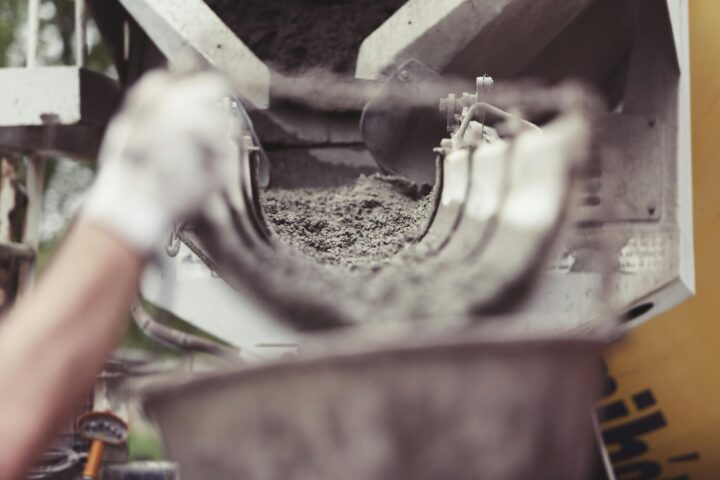The following contribution is from another author.
Cutting concrete is something that might not seem too complex if you read about it or watch some videos online to see how it is done. The mechanics may seem simple, and the tools easy to handle. While that is true to some extent, there are some subtleties that go into this activity that may take a few tries to master.
If you need to have some concrete cut, then reaching out to a concrete cutting company might be the optimal move instead of doing it yourself. If you do decide to DIY it, though, you will need to pay attention to these tips. Let’s run through the do’s and don’ts most associated with this activity.
Why Might You Need to Cut Concrete?
Before we get into some of the do’s and don’ts to think about when cutting concrete, it makes sense to talk about why you might need to do it in the first place. The main reason is because you need to be able to control potential cracking. You may also want to preserve the aesthetic appeal and structural integrity.
What’s crucial to remember is that concrete changes and shifts as it cures and dries. This is due, in part, to water evaporating from the surface of it. These activities can cause cracks. However, these would not be the cracks you’d want as a homeowner or a business owner.
Instead, you want to create your own cuts at strategic areas. These are sometimes referred to in the construction industry as control joints. You may also sometimes hear the term “expansion cuts” used. You particularly need them near curbs and foundations.
Now, let’s move on to those do’s and don’ts.
Do Cut Within 24 Hours of Pouring Your Concrete
You will want to make your cuts within 24 of pouring the concrete. Doing so will ensure that the concrete has hardened, but also that it is still relatively malleable and pliable.
Do Keep an Eye on the Weather
You will want to keep an eye on the weather when you are going to pour and cut the concrete as well. That is because if it starts raining or there’s some other sort of precipitation, it can damage the integrity of the fresh concrete that you just poured and prevent you from having the right consistency to make your cuts.
If you watch a company pour and cut concrete, they will usually do it in the summer. That’s when the weather is the most consistent in many parts of the country. In the winter it’s too cold for these activities, but spring or autumn rainstorms make these seasons impractical as well.
Chalk Your Cutting Lines
Whether you’re doing the cutting yourself or hiring someone else to do it, you will certainly want to chalk the lines that you are going to cut. This enables you to see those lines and adhere to them.
It’s also helpful to have someone look at the chalk lines you made before you start cutting. You want to make sure they’re straight to someone else’s eye as well as your own.
Use Water Correctly
You will want to use water to cool down the blade if it gets too hot. You can have a hose, bucket, or some other source standing by for this purpose as you get started on the job. You should also be able to work faster if you cool the blade down periodically.
Use the Proper Blade for the Job
The blade you decide to use certainly makes a significant difference. A diamond blade is almost always a solid choice. That is because it makes clean cuts and lasts a long time. You will want to replace it as soon as it starts to show some signs of wear.
Always Wear Protective Gear
Wearing protective gear is an absolute necessity. You should have steel-toed boots, gloves, a dust mask with ventilation built into it, hearing protection, safety glass, and a hard hat. You can get these from any hardware store like Home Depot or Lowes, or there are also construction outlets that will sell you anything related to these kinds of jobs.
Don’t Use a Damaged Blade
If all you have is a damaged blade, you need to put off doing the job until you can replace it. Hurrying forward to try and finish if you have a damaged blade can cause an injury or cuts that don’t align with your vision for the project.
Do Not Use a Sledgehammer
Some individuals might try to use a sledgehammer as part of this project. While it is true that you can potentially utilize a chisel and sledgehammer to remove small concrete sections, it’s best to leave those behind if you’re going to be making some cuts to fresh concrete. These tools are not right for jobs where you’re working with a freshly-poured slab.
Do Not Work in an Area That’s Poorly Ventilated
Poor ventilation is no condition for anyone to work, whether they’re cutting concrete or doing anything else where particulate matter is released into the air. Instead, make sure you have the right ventilation set up before proceeding.
Do Not Disable Any of Your Safety Features
If you have safety features in place during a concrete cutting job, you should never disable them while the work is going on. It’s not uncommon to have things in place like deadman controls and E-stops during concrete cutting. Those should remain there until you’re certain no more active work is being done.
Do Not Force the Blade
The last thing you should be sure not to do is to force the blade as you cut. Doing so will create uneven lines. The blade can also warp if you do this, or the motor can burn out.
If you keep all of these handy tips in mind, your concrete cutting project should go smoothly. You will be able to stay safe while creating cuts that look perfect and that will preserve the fresh concrete’s integrity.
















